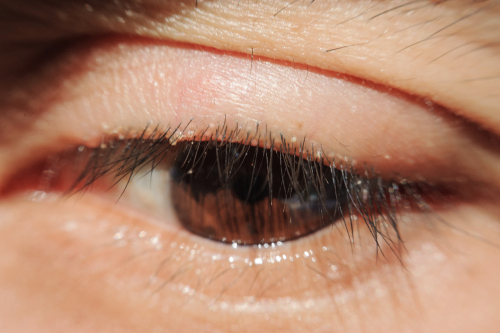What Causes Blepharitis to Worsen?

Blepharitis is a relatively common eye condition characterized by swollen, itchy, red, and irritated eyelids. It often produces crusty flakes on the eyelashes. Blepharitis is uncomfortable, but it is not contagious and does not cause long-term eye damage. Cleaning the eyelids regularly can help eliminate the crusts, but blepharitis has no cure. There are ways to manage the condition.
Causes of Blepharitis
Excessive bacteria usually cause blepharitis on the eyelids along the base of the eyelashes. Having bacteria on the skin is normal, but too much of them can cause problems. In most cases, the condition is not preventable.
Blepharitis can also be due to clogged oil glands. The glands in the eyelids can become clogged and irritated from oil and debris. Regularly failing to remove makeup before bed can exacerbate the condition. The two types of blepharitis are anterior and posterior blepharitis.
Symptoms of Blepharitis
Common symptoms of the condition include:
Burning or stinging sensation.
The sensation of something in the eye.
Itchy eyes.
Watery eyes.
Swollen and red eyes and eyelids.
Light sensitivity.
Dry eyes.
Foamy tears.
Crusty eyelashes or eyelids on waking up.
Severe blepharitis can lead to symptoms such as blurry vision, falling eyelashes, and eyelashes growing in the wrong direction. Some people experience swelling in the cornea.
What Causes Blepharitis to Worsen
Some factors can contribute to the worsening of blepharitis. They include:
Having dandruff or flaky skin patches on the face or scalp.
Having rosacea, a condition characterized by redness and bumps.
Having naturally oily skin.
Suffering from allergies affecting the eyelashes.
Mites or lice in the eyelashes (demodicosis).
Having meibomian gland dysfunction (MGD) can worsen posterior blepharitis.
Complications From Blepharitis
If not properly managed, blepharitis can lead to other health complications. These include a stye, a painful red lump on the eyelid eye, and a chalazion, a painless hard lump. It can also lead to dry eye as flakes and oil build up in the tear film. Blepharitis can also damage the cornea due to eyelid swelling, irritation, or ingrown eyelashes. In some cases, it can lead to long-term or chronic red eye.
Managing Blepharitis
The best way to treat or manage blepharitis is by keeping the eyelids clean. Use warm water and a gentle cleaner to remove crusts and clean the eyelids daily. You can also use a warm compress every day. Avoid eye makeup to reduce irritation. Treating blepharitis will depend on the type, and options include antibiotics, immunomodulators, and anti-inflammatories. Treating the underlying cause can help manage the condition.
Blepharitis is often beyond the patient’s control, but there are ways to soothe or relieve the symptoms. Keeping the hands and face clean can help reduce irritation. Avoid touching the eyes, but if you must, use clean tissue. Wipe away excess medication or tears, and always remove all makeup before bed. Wearing eyeglasses instead of contacts can help reduce discomfort.
For more on what causes blepharitis to worsen, call Quality Eye Care in Jacksonville at 904-601-1300 to discuss questions or schedule an appointment.







